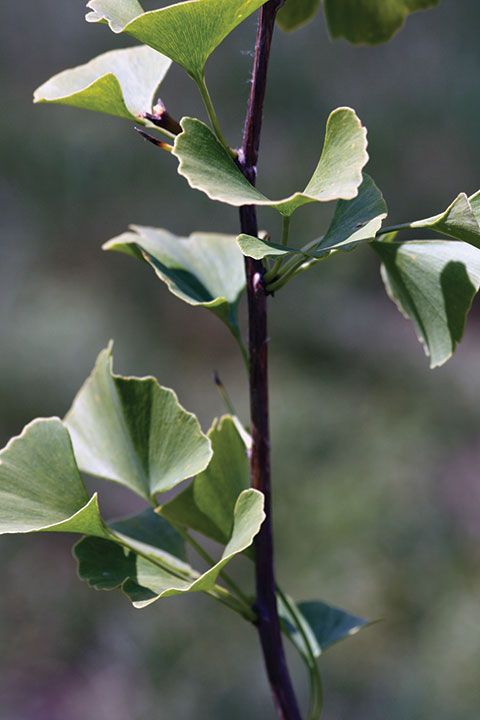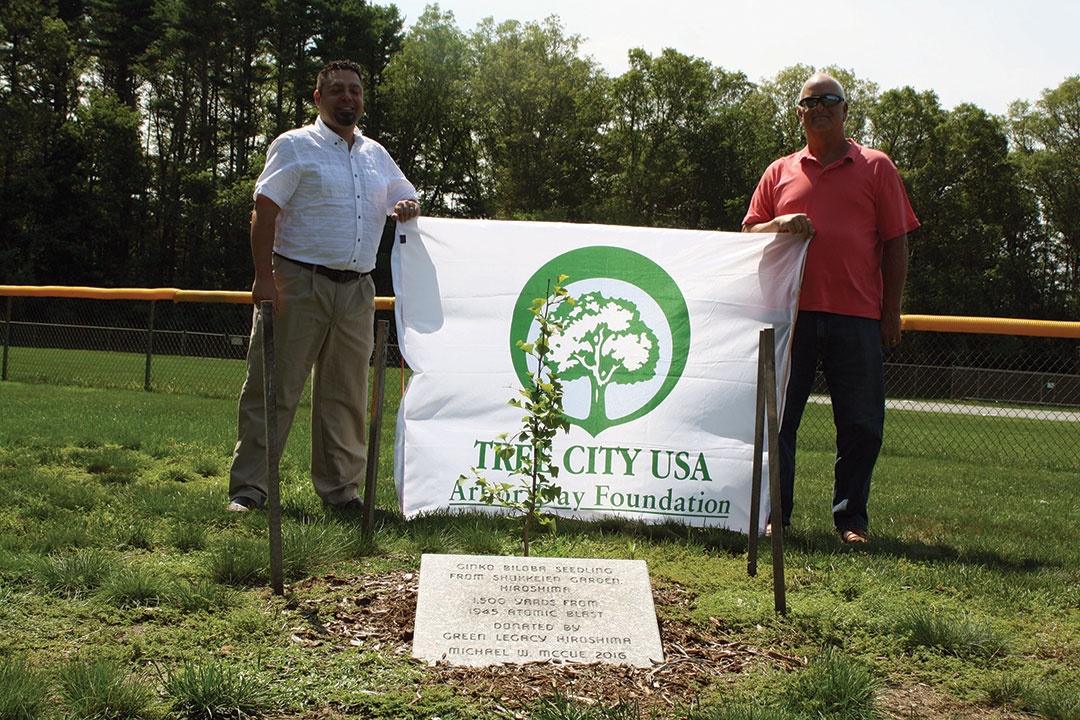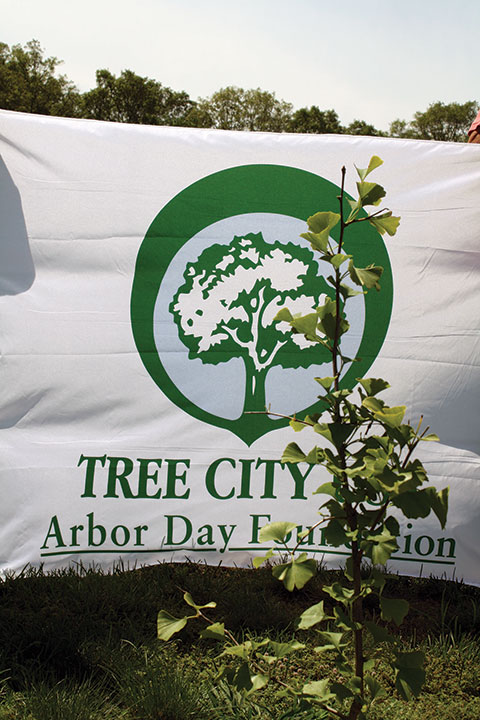The Town of Rochester on Sunday, August 6, officially acknowledged the planting of a gingko biloba sapling gifted to the town by its former Town Administrator Michael McCue – a rare gift that not many other cities or towns in this part of the world possess.
This special baby tree was born of an international effort to spread the seeds of peace across the globe. Green Legacy Hiroshima Initiative, a joint initiative with the United Nations Institute for Training and Research (UNITAR), propagates and disperses the saplings from many of the 170 trees in 55 locations within about one-and-a-quarter miles of ground zero of the Hiroshima atomic blast on August 6, 1645 – “Hibaku-jumoku,” which means “survivor trees.”
The ginkgo sapling was planted during the last weekend of June at the Dexter Lane Ball Field in the far end behind the playground by Highway Surveyor Jeff Eldridge, who also placed a plaque commemorating McCue’s gift and its historical significance.
This particular sapling was grown from a 250-year-old survivor tree that was only 1,370 meters from the atomic blast.
Matthew Monteiro of the Rochester Historic District Commission, who took on the Arbor Day responsibilities from McCue after he resigned from his position, led a brief ceremony before a handful of people to celebrate the Town’s participation in Arbor Day and also acknowledged the 72nd anniversary of the nuclear bombing.
“I want to thank Green Legacy Hiroshima for this gift to our town and recognize Michael McCue who sought out the opportunity on our town’s behalf,” said Monteiro. “Seventy-two years ago today on August 6, 1945, a nine-thousand pound atomic bomb was dropped over the city of Hiroshima.”
Nearly the entire city was destroyed and 80,000 people died instantly, and thousands would later die as a result of the bombing.
“Most of the trees and other vegetation were destroyed,” said Monteiro, “so in 1951, the first president of Hiroshima University, Tatsuo Morito, sent a letter to universities in Europe, the U.S., and Asia asking to be sent tree seeds and seedlings to replant their campus.”
Monteiro said, quoting Morito, “Green is the color of vividness, the color of hope, the color of peace.”
The response was great, said Monteiro, and the grounds once burned by an atomic blast were replanted.
Monteiro continued recounting the history of Green Legacy Hiroshima Initiative and its formation in 2011 by former Director of the Hiroshima Office of the UNITAR Nassrine Azimi.
“We are grateful to recognize the value of trees along with the Arbor Day Foundation,” said Monteiro, “not only as physical comforts that provide cool shade and beauty, but as Ms. Azimi said, ‘While silently testifying to the inhumanity of nuclear weapons, they also tell us of the importance of resilience, tolerance, and living in harmony with nature.’”
Fellow member of the Historic District Commission Laurene Gerrior thanked those in attendance, which included Selectman Greenwood Hartley, for celebrating with them the planting of the tree.
“This ginkgo joins a long line of memorial trees, including the forty-plus trees planted in various locations by the Green Ways Committee,” said Gerrior. These trees include the male and female ginkgo at the waterworks, the mulberry at the grange, a memorial to a local serviceman killed in WWII, Linc Rounseville’s beech tree in his corn field, Gerrior said, and a 12-foot-wide white oak off Alley Road that won the Big Tree contest back in the ‘90s.
“May this tree be remembered and join this illustrious group of trees here in Rochester,” said Gerrior.
Monteiro shared information about the surviving mother tree of Rochester’s sapling located in Shukkeien Garden and provided a photo. The mother tree still stands slanted toward the hypocenter, with its trunk 4 meters wide and 17 meters tall.
By Jean Perry


